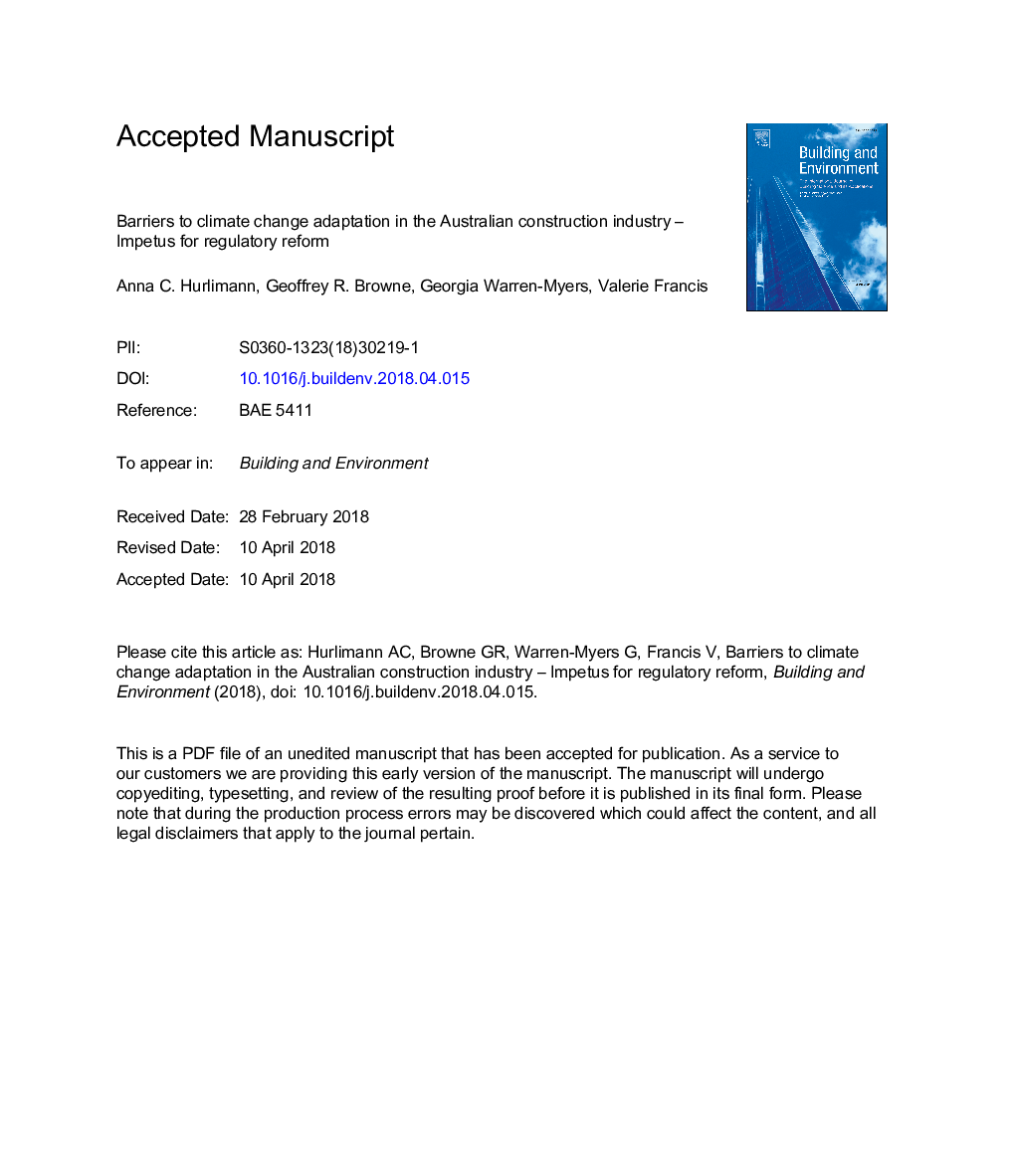| Article ID | Journal | Published Year | Pages | File Type |
|---|---|---|---|---|
| 6697374 | Building and Environment | 2018 | 40 Pages |
Abstract
It is increasingly recognised that the risks associated with climate change must be addressed through both mitigation and adaptation. Buildings are vulnerable to climate change risk and are also the source of a significant proportion of greenhouse gas emissions which contribute to climate change. The construction industry has significant potential to facilitate adaptation through actions that both reduce its contribution to greenhouse gas emissions across the construction and building lifecycle, and through physical adaptation of buildings and settlements to withstand present and future changes. However, there is limited evidence of significant adaptive action to date, and little is known about existing barriers to adaptation actions in the construction industry. This research explores barriers to climate change adaptation in the Australian construction industry through qualitative interviews with twenty-one key stakeholders. The barriers identified included: the use of inconsistent and unclear language, limited regulation, perceived unaffordability of initiatives, lack of awareness of climate change, and lack of client demand to implement initiatives. Recommendations to facilitate strategies for adaptation to climate change in the construction industry are provided. These focus on the need to a) address climate change through regulatory reform, and b) address the structure of the construction industry and its interrelationship with other built environment professions and processes.
Related Topics
Physical Sciences and Engineering
Energy
Renewable Energy, Sustainability and the Environment
Authors
Anna C. Hurlimann, Geoffrey R. Browne, Georgia Warren-Myers, Valerie Francis,
